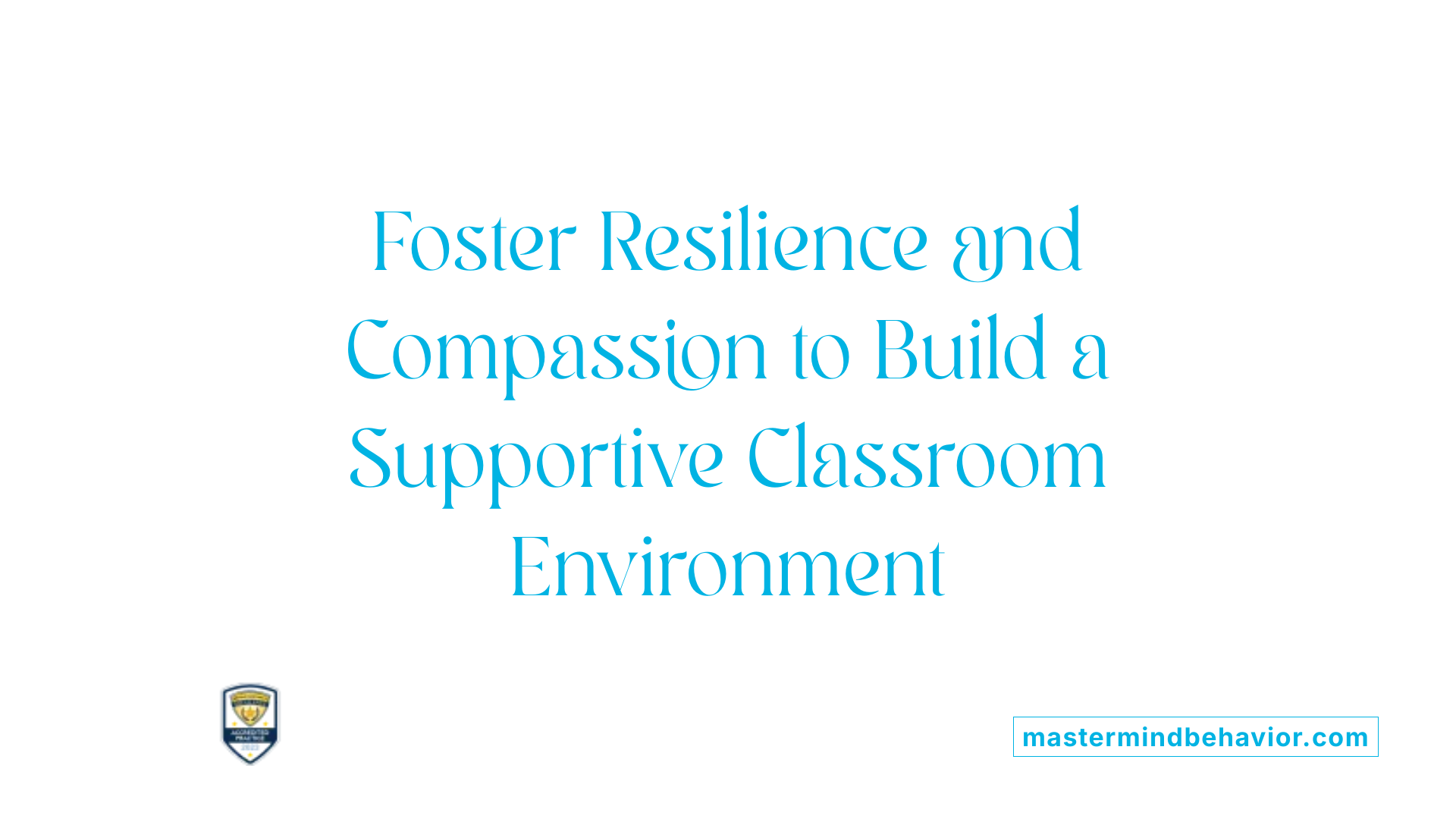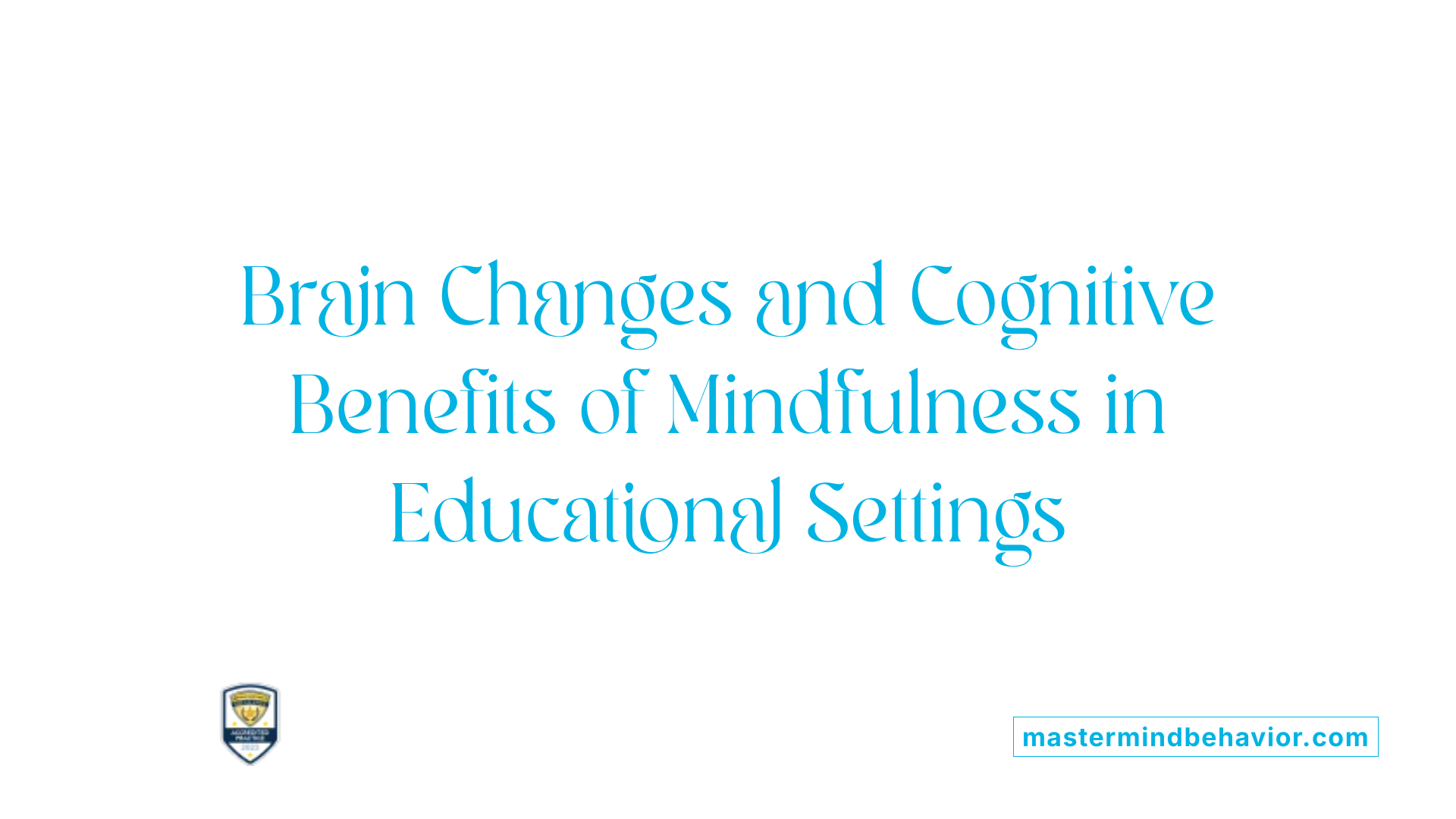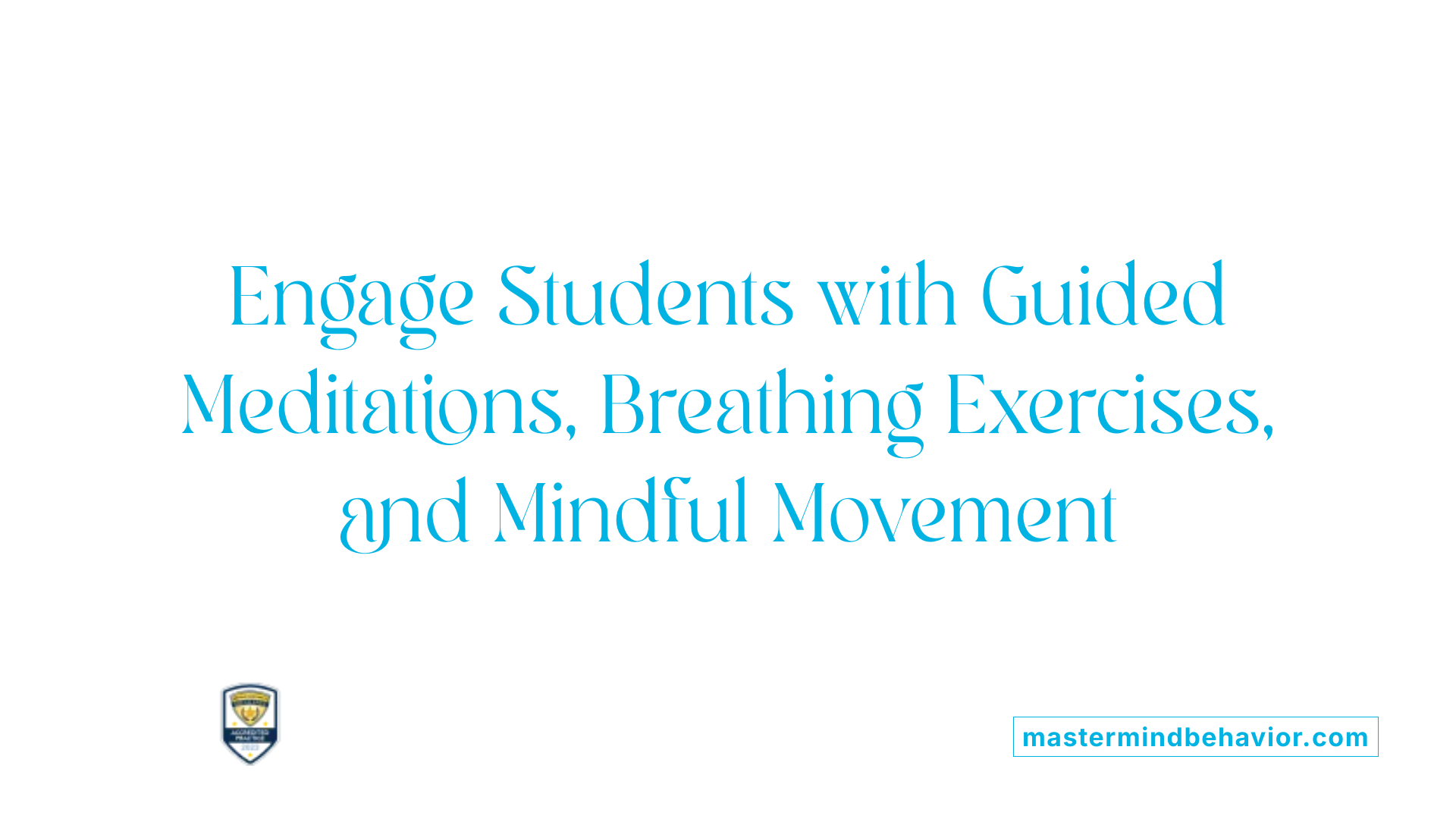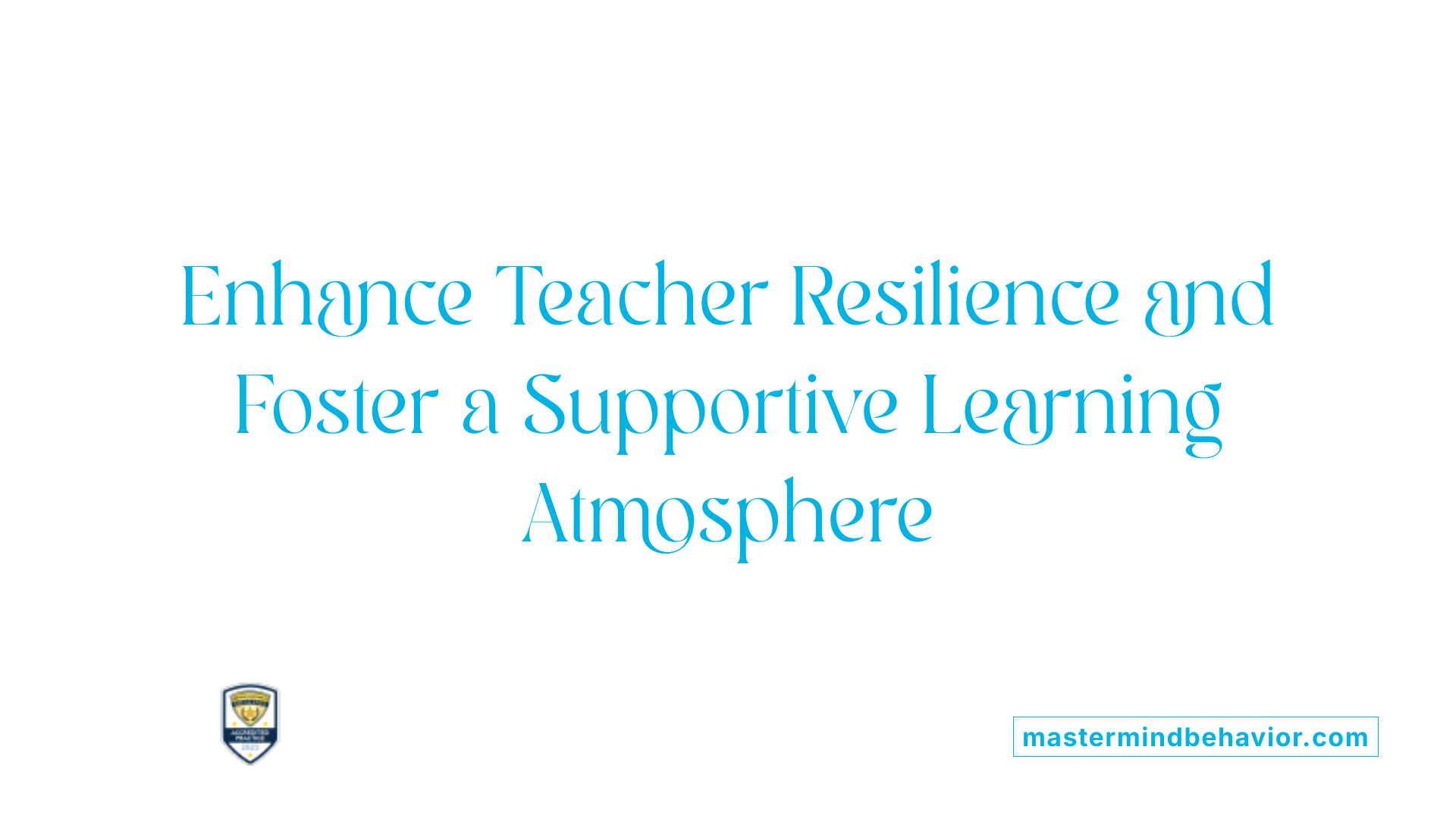Unlocking the Potential of Mindfulness in Schools
In recent years, mindfulness techniques have gained recognition for their profound impact on both students and educators. By integrating mindfulness into educational settings, schools are creating calmer, more focused, and emotionally resilient learning environments. This article explores the extensive benefits of teaching mindfulness techniques, supported by scientific evidence, practical methods, and strategic implementation approaches, demonstrating how mindfulness can revolutionize education for all stakeholders.
Benefits for Students’ Emotional and Social Development

What are the benefits of teaching mindfulness techniques in education?
Introducing mindfulness techniques in the classroom provides significant advantages for students’ emotional and social growth. These practices foster improved self-awareness, enabling children to recognize their feelings and reactions more clearly. As a result, students develop better emotional regulation skills, helping them manage anger, frustration, and anxiety more effectively.
Research shows that mindfulness reduces anxiety, depression, and overall stress among students. For instance, studies have found that students practicing mindfulness are less prone to negative emotions and can better handle academic and social pressures. This emotional resilience encourages positive behaviors and contributes to a calmer, more supportive classroom atmosphere.
Mindfulness also enhances social skills by cultivating empathy and compassion. When students learn to be present and attentive, they become more understanding and respectful toward peers, which promotes cooperative interactions and reduces conflicts. Importantly, mindfulness can support students with conditions like ADHD, autism, and anxiety—helping them improve focus, reduce impulsivity, and navigate social situations with greater confidence.
For teachers, incorporating mindfulness practices not only benefits student development but also lessens classroom stress, making management easier and interactions more meaningful. Structured programs, supported by institutions like the University of San Diego, equip educators with the tools needed to embed mindfulness systematically, ensuring the lasting positive impact on classroom culture.
In summary, teaching mindfulness in schools nurtures emotional stability and social competence, laying a foundation for healthier relationships, better learning outcomes, and overall well-being.
Scientifically Supported Outcomes of Mindfulness in Schools

What scientific evidence supports the benefits of mindfulness for students and teachers?
Research over the past decades strongly supports the positive impact of mindfulness in educational settings. Clinical trials and systematic reviews have shown that mindfulness practices help reduce stress, anxiety, depression, and even physical health issues like high blood pressure and insomnia. For students, regular mindfulness exercises enhance attention span, emotional regulation, and overall mood, creating a calmer and more focused learning environment.
Studies involving brain imaging reveal that mindfulness induces structural changes in the brain areas associated with learning, memory, emotion regulation, and empathy. For example, increases in grey matter density in regions like the hippocampus and prefrontal cortex have been linked to improved cognitive and emotional functions. Brain scans also show decreased activity in the amygdala, suggesting reduced emotional reactivity and stress.
Furthermore, research shows that mindfulness can improve academic achievement by increasing concentration, reducing test anxiety, and decreasing mind-wandering. Classroom-based studies, including those with elementary and middle school students, indicate improvements in social skills, self-esteem, and behavior. Teachers practicing mindfulness report better emotional well-being, enhanced classroom management, and stronger relationships with students.
In sum, the scientific evidence demonstrates that mindfulness benefits extend from individual mental health to improved cognitive functioning and classroom dynamics, making it a valuable tool for fostering a positive educational environment.
Practical Activities and Techniques for Classroom Implementation

What are some practical methods and activities for implementing mindfulness in classrooms?
Implementing mindfulness in the classroom can be simple and engaging, helping students develop emotional regulation and attention skills. Teachers can start with basic breathing exercises, such as square breathing—inhale for four counts, hold, exhale for four counts, and hold again—to help students stay present and calm.
Guided meditations are also effective. Teachers might use visual aids like posters, glitter jars, or soft background music to facilitate calming visualizations. These practices help students focus and reduce anxiety.
In addition, mindful movement activities, such as yoga, stretching, or gentle body scans, encourage physical awareness while grounding students in the present moment. Short mindful walks around the classroom or schoolyard can serve as moving meditations.
Sensory awareness exercises are valuable tools. For example, the 54321 technique involves students identifying five things they see, four they hear, three they touch, two they smell, and one they taste. This helps redirect focus from stressful thoughts to the immediate environment.
Establishing routine mindfulness activities at the start or end of each class reinforces consistent practice. Teachers might incorporate gratitude journaling, setting intentions, or reflective questions about emotions experienced during the day.
By integrating these strategies into daily lessons, educators can promote a positive, calm classroom atmosphere where students feel supported and engaged.
Integrating Mindfulness into Educational Systems

How can mindfulness practices be integrated into educational settings effectively?
Successfully embedding mindfulness into schools requires a combination of structured routines, teacher support, developmentally appropriate strategies, and a positive school culture. Regular, scheduled mindfulness activities like guided meditation, breathing exercises, and movement breaks help students and teachers pause, reset, and manage emotions. These practices can be seamlessly woven into the daily routine to promote focus, emotional regulation, and overall wellbeing.
Professional development for educators is crucial. Teachers trained in mindfulness techniques can confidently facilitate activities, recognize emotional cues, and model calm presence. Such training equips teachers to create a classroom environment conducive to learning and emotional growth.
Adapting mindfulness activities to suit different age groups enhances their effectiveness. For young children, simple practices such as breathing exercises, body scans, or listening to sounds can help develop self-awareness. Older students might engage in reflective exercises, gratitude journals, or mindfulness discussions that deepen their emotional understanding.
Building a school-wide culture that values mindfulness encourages consistent practice and collective benefits. When staff and students see mindfulness as integral to school life, it fosters trust, empathy, and positive relationships. This atmosphere reduces behavioral issues and supports mental health.
Continuity and support are essential. Schools can collaborate with organizations like Mindful Schools or MindUP to access resources, curricula, and ongoing guidance. Regular evaluation helps tailor programs, ensuring they meet students’ evolving needs and sustain long-term benefits.
In essence, a thoughtful, well-supported, and age-appropriate approach to mindfulness in education can significantly improve student behavior, emotional resilience, and learning outcomes, shaping a healthier school environment.
Benefits for Teachers' Well-Being and Classroom Environment

How can mindfulness support teacher well-being and classroom dynamics?
Mindfulness plays a significant role in enhancing teachers' mental and emotional health. Regular mindfulness practice helps reduce stress and prevent burnout, which are common challenges faced by educators. When teachers cultivate mindfulness, they develop better emotional resilience, allowing them to handle classroom pressures with greater calmness and clarity.
Practicing mindfulness improves teachers' ability to self-regulate their emotions and reactions, fostering a more empathetic and patient presence. This not only benefits their well-being but also influences the classroom atmosphere positively.
By integrating mindfulness into daily routines—such as through mindful breathing or attentive listening—teachers can model these behaviors for students. This modeling encourages a classroom culture grounded in awareness and empathy, which strengthens relationships between teachers and students.
Furthermore, mindfulness enhances teachers' effectiveness in managing disruptive behaviors and responding thoughtfully rather than reactively. The result is a more supportive environment where students feel valued and understood.
In essence, incorporating mindfulness into education promotes emotional resilience among teachers, facilitates better classroom interactions, and creates a healthier, more engaging learning setting. This approach benefits both educators and students, fostering a more positive and collaborative school climate.
Mindfulness as a Tool for Classroom Behavior and Focus
How does mindfulness impact classroom behavior, focus, and emotional regulation?
Mindfulness has a profound effect on classroom behavior, attention, and how students regulate their emotions. When children practice mindfulness, they develop skills in self-regulation and executive functioning, empowering them to better manage impulses, stay focused, and recognize their feelings.
Teachers often incorporate simple mindfulness activities like deep breathing, movement, or reflective exercises. These practices help students become more aware of their emotional states, allowing them to respond thoughtfully instead of reacting impulsively. As a result, classrooms tend to see fewer conflicts, reduced aggression, and calmer behavior.
Scientific studies support these observations, indicating that mindfulness enhances brain regions responsible for focus and cognitive control. This leads to better attention spans, improved decision-making, and a greater capacity for emotional awareness. Mindfulness also benefits students with autism, ADHD, or learning differences by fostering social skills such as empathy and understanding perspectives.
Creating a mindful classroom fosters a supportive environment centered around self-awareness and emotional resilience. It encourages a culture where patience, compassion, and calmness are valued, ultimately leading to healthier behaviors, higher academic success, and improved social interactions among students.
Enhancing Teacher and Student Relationships Through Mindfulness
How can mindfulness support teacher-student relationships?
Practicing mindfulness can significantly improve the bonds between teachers and students. Mindful teachers are fully present during interactions, which signals to students that they are valued and understood. This attentive presence fosters trust and strengthens the connection in the classroom.
Mindfulness enables teachers to recognize their own emotional responses and observe student behaviors nonjudgmentally. This emotional awareness allows for more empathetic and thoughtful responses, reducing misunderstandings and conflicts.
Additionally, mindfulness practices improve active listening skills, helping teachers respond more effectively to students' needs. When teachers are mindful, they create a safe space where students feel genuinely heard and appreciated.
For students, experiencing consistent, nonjudgmental attention from teachers builds a sense of safety and belonging. This emotional security encourages positive social and emotional development.
Overall, integrating mindfulness into teaching cultivates a classroom environment grounded in respect, trust, and collaboration, fostering healthier and more supportive relationships that benefit both learning and personal growth.
Long-term Outcomes and Benefits of Mindfulness Practice
What are the long-term benefits of mindfulness for students and teachers?
Practicing mindfulness over an extended period can lead to significant neural and cognitive brain changes. These include increased gray matter density in regions linked to learning, memory, emotion regulation, and empathy. Such physical brain adaptations support better focus, quicker decision-making, and enhanced emotional control.
For students, sustained mindfulness practice fosters resilience and emotional intelligence. It helps them develop the ability to manage stress, improve social interactions, and boost academic performance. Mindfulness also equips students with coping skills that benefit their mental health, reducing symptoms of depression, anxiety, and behavioral issues.
Teachers, on the other hand, enjoy greater job satisfaction and a lower risk of burnout. Mindfulness helps educators manage classroom challenges more effectively, creating a positive learning environment. Additionally, teachers become more empathetic and compassionate, promoting stronger student-teacher relationships.
Beyond immediate classroom benefits, mindfulness cultivates a growth mindset. It nurtures lifelong qualities such as self-compassion, patience, and a balanced perspective on life. This comprehensive approach supports overall well-being, enabling individuals to flourish both personally and professionally.
In essence, regular mindfulness practice leads to a healthier, more adaptable mindset. It encourages continual development of emotional resilience, cognitive flexibility, and the capacity to thrive amidst challenges, creating a foundation for lifelong mental health and overall life satisfaction.
Embracing Mindfulness for a Brighter Educational Future
The integration of mindfulness techniques into educational settings is supported by a wealth of scientific research and practical evidence demonstrating its significant benefits. From improving emotional regulation and social skills to fostering healthier teacher-student relationships, mindfulness cultivates a nurturing environment conducive to learning and well-being. As schools adopt these practices, they not only enhance academic outcomes but also promote mental health, resilience, and compassion among students and educators alike. Embracing mindfulness is a vital step toward creating more humane, effective, and resilient educational systems—an investment in the future of our children and the well-being of those who teach them.
References
- Integrating Mindfulness in the Classroom: Benefits and Seven ...
- The Power and Benefits of Mindfulness Meditation| Child Mind Institute
- Making Time for Mindfulness | Harvard Graduate School of Education
- Expanding Mindfulness Practice Creates Benefits From Classrooms ...
- Seven Ways Mindfulness Can Help Teachers
- Why Mindfulness Strengthens Social Emotional Development and ...
- Mindfulness for Your Health | NIH News in Health
- Mindfulness in the Classroom - Child Mind Institute









